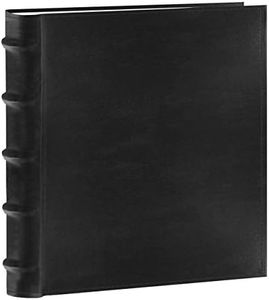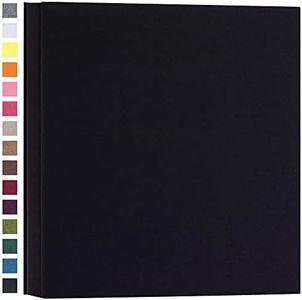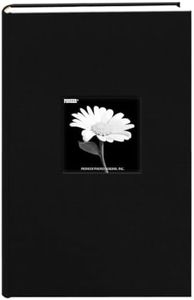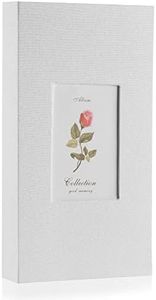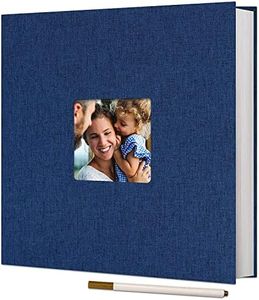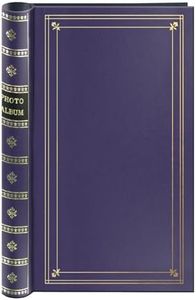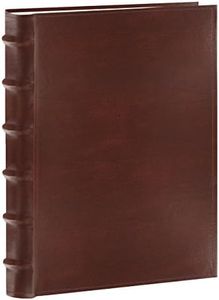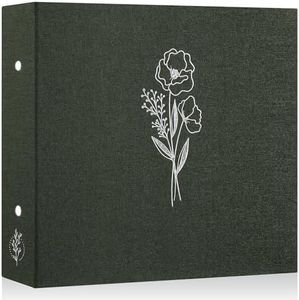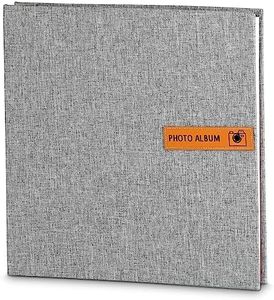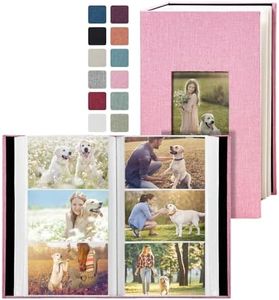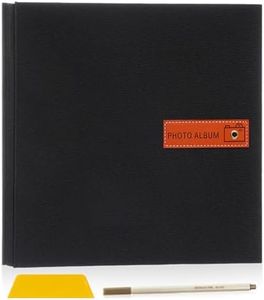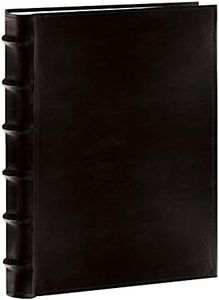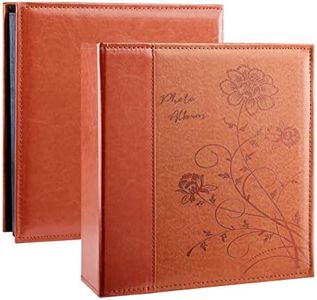We Use CookiesWe use cookies to enhance the security, performance,
functionality and for analytical and promotional activities. By continuing to browse this site you
are agreeing to our privacy policy
10 Best Archival Photo Albums
From leading brands and best sellers available on the web.Buying Guide for the Best Archival Photo Albums
Choosing an archival photo album is important if you want to preserve your treasured photos for many years. The right album protects photographs from fading, damage, and environmental factors. The key to a great archival album is understanding the materials used, the design features, and the storage options. By focusing on a few key specifications, you can get an album that best matches your needs based on what you’re storing and how you want to use or display your photos.Archival Quality (Acid-Free and Lignin-Free)Archival quality refers to the materials being acid-free and lignin-free, which prevents photos from yellowing, fading, or deteriorating over time. This is important because acids and lignin naturally found in many papers can damage photos. If you care about keeping your pictures in top condition for decades, always choose albums labeled acid-free and lignin-free. Most professional or true archival albums will advertise this. If you plan to store valuable or irreplaceable photos, prioritize this feature.
Photo Page Material (Paper vs. Plastic Sleeves)Photo albums typically use either thick archival paper or clear plastic sleeves to hold photographs. Paper pages often let you use photo corners or adhesive, while plastic sleeves protect photos without sticky adhesives. When browsing, you'll see options for both. Plastic sleeves come in polypropylene, polyester, or polyethylene—look for these as they’re considered safe for photos. Avoid PVC sleeves as they're not archival. Think about how you want to organize and view your photos; plastic sleeves make for easier viewing and better protection against handling, while paper pages are better for scrapbooking or creative layouts.
Binding StyleBinding style determines how your album is held together and how easy it is to use: it can be ring-bound, post-bound, or permanently bound (book-bound). Ring- and post-bound albums let you rearrange and add or remove pages easily, which is useful for growing collections. Permanently bound albums don’t allow for changes, but often feel more solid and look neater on shelves. Consider if you want expandability or a fixed, finished album before choosing.
Page CapacityPage capacity is how many photos or pages the album can hold. Albums can range from small sizes holding 20 photos up to large albums for hundreds. If you have a big collection or want to keep an event in a single album, get a high-capacity option. For special occasions or highlights, a smaller album may suit you. Reflect on whether the album is for a lifetime of memories or just a specific set of pictures.
Photo Size CompatibilityDifferent albums are designed for specific photo sizes: common ones are 4x6, 5x7, or even larger. Make sure the album matches the dominant photo size in your collection—trying to fit photos into the wrong-size slots can cause damage or look messy. If you have photos of different sizes, look for albums with mixed photo slots or consider ones where you can place your own pockets or corners on blank pages.
Cover Material and DesignThe cover material can be made from cloth, leather, faux leather, plastic, or archival board. Besides appearance, the main thing to consider is whether the cover provides sturdy protection and is free from harmful chemicals (like PVC). Pick a design that matches your style, but also think about where the album will be stored—is it going on a shelf and needs durability, or is it more for display?
